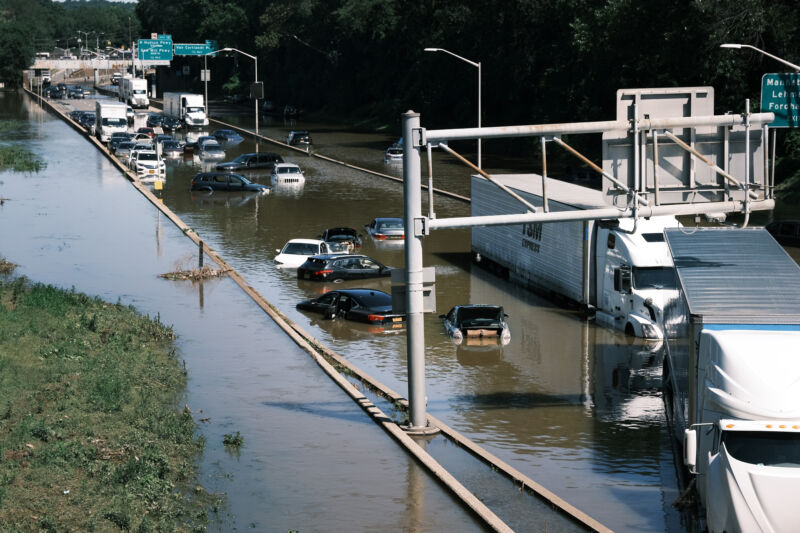
Enlarge / Cars sit abandoned on the flooded Major Deegan Expressway in the Bronx following a night of heavy wind and rain from the remnants of Hurricane Ida on September 02, 2021, in New York City. (credit: Spencer Platt/Getty Images)
In just a few hours on Wednesday night, between 6 and 10 inches of rain fell on New York City—more than has fallen on San Jose, California, in the past year. Water rose in basement apartments and leaked through roofs. Rain streamed into subway stations and pooled on the tracks. The remains of Hurricane Ida, which had thrashed the Gulf Coast earlier in the week, brought floods to the Northeast. Across the region, the death toll reached 40 by Thursday evening. Subway delays and suspensions continue.
The city’s infrastructure, you see, was built in the late 19th and early 20th centuries to withstand the sort of storm that comes every five to 10 years. Now brutal, record-breaking storms are an annual occurrence. What was left of Ida transformed the scene of everyday commutes into a disturbing reminder that climate change comes for us all. Wildfire thunderclouds in the West, blackouts in Texas, hurricanes in the South, torrential downpours in the East: “It’s all the stuff we said would happen 20 years ago,” says Zeke Hausfather, a climate scientist and the director of climate and energy at the Breakthrough Institute. “It’s just a little crazy to see it all happening at once.”

The storm flooded roadways. But it also inundated the alternatives aimed at getting people out of their cars: bike lanes, sidewalks, and public transit systems. For a time in New York on Thursday, all that was underwater. The images of water spilling into subway stations brought the crisis home. “You don’t have to be a person with a great understanding of infrastructure to know that that is a problem,” says Michael Horodniceanu, former president of the Metropolitan Transportation Authority’s Capital Construction Company and now the chair of the Institute of Construction Innovations at NYU. “We’re starting to see the results of what is, in my view, a certain amount of lax attention to what our infrastructure is doing.”
